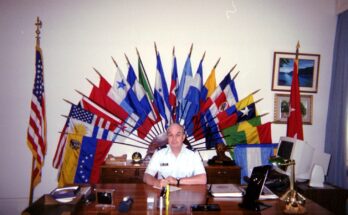Many military officers are assigned “additional duties”. When I arrived to fill my new full-time job in research and development at Wright-Patterson AFB in 1979, I was given the additional duty of “top secret control officer”. The only real responsibility of the job was to perform a periodic inventory of the organization’s top secret documents. All those documents were kept in a safe in the General’s office. I arrived to do my first inventory to find that the General was away. I asked his secretary to open the safe so I could inventory the documents. She refused. She said the General allowed no one to see his “Have Blue” material. I told her that I did not need to look inside the documents. I only needed to view the control numbers on the cover sheets to verify the documents were there. She gave me a stern look and said, “you are an Air Force Captain who wants to someday be an Air Force Major so don’t concern yourself with the General’s classified documents”. I got her meaning. For the only time in my 30-year career, I falsified a document. I signed off on the inventory trusting the General to properly manage his classified account.
I found out a few weeks later that “Have Blue” was the codename for the development of our first “stealth fighter” later designated the F-117. As I was attempting my inventory the Lockheed Corporation had already built two of those airplanes and they were undergoing flight tests in Nevada. The Air Force would eventually purchase 59 F-117s. The last one was retired in 2008. Later aircraft, notably the F-22 and the F-35, would incorporate many of the stealth features of the F-117.
In the early 1980s, many of today’s front line Air Force weapons were in early stages of development. Various models of the F-16 and the new F-15 “Strike Eagle” were near the top of the list. Impressive state-of-the art prototypes of some aircraft never made it into production and were referred to as “laboratory programs”. Those programs included an F-15 which could maneuver itself and fire at enemy aircraft without the pilot’s hands on the controls. An F-16 which could turn right or left without banking and having a primitive voice control system containing fifty words. A swing-wing F-111 with flexible composite wings which could become thicker or thinner at various speeds eliminating the need for traditional flaps and ailerons. One of my favorite projects was the construction of two modernized P-51s with turboprop engines and updated cockpit instruments . They were evaluated as close air support aircraft. They lost to the much more capable A-10.
The U-2 and the SR-71 were unique. The U-2 was essentially a subsonic powered glider which could fly at 70,000 feet. Out of the reach of enemy defenses of the day. We found that was no longer true when the Soviets shot down Francis Gary Powers during a high altitude photo mission over Russia. The SR-71 became a legend because of its mach 3 speed and its ability to cruise at altitudes over 80,000 feet. It was expensive to operate, requiring a special fuel and a dedicated fleet of tankers. The advent of spy satellites and improved surface to air missiles led to its demise. NASA still flies a few for research.
Many of those aircraft which were state-of-the-art in the 1980s now sit in the Museum of the United States Air Force at Wright-Patterson AFB near Dayton, Ohio. One of the aircraft there is the famous F-106 Delta Dart from the Montana Air National Guard. The fighter plane which safely landed itself in a wheat field after the pilot had ejected. The museum also houses the world’s only B-70 Valkyrie supersonic bomber.



